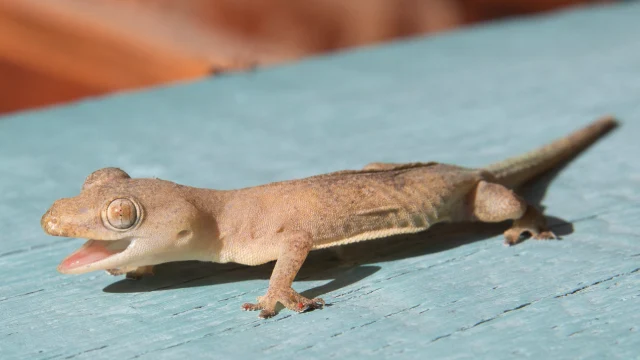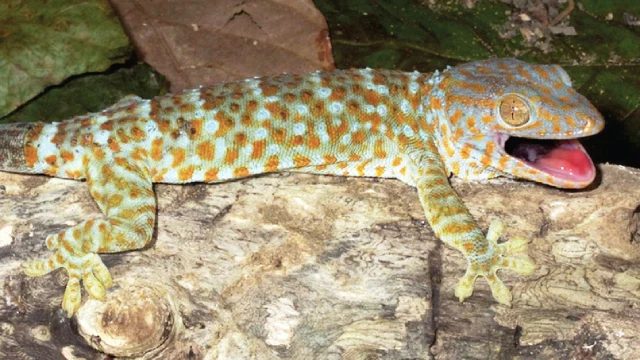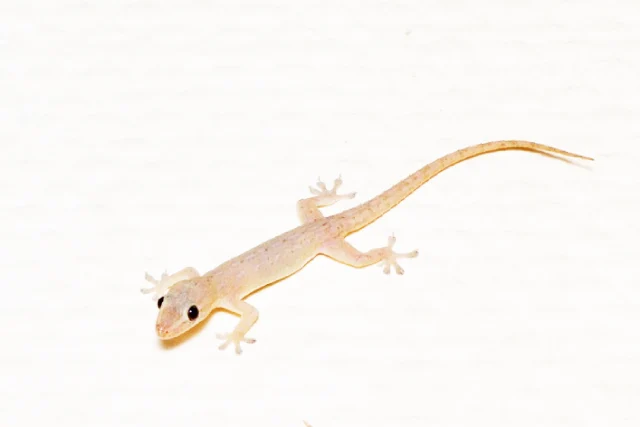Things to Do in Bali
Living with Geckos in Bali
Locals often call the gecko cicak — a name that mimics the clicking sound it makes at night, especially from ceilings or walls. In many parts of Indonesia, people grow up with that familiar “cek-cek-cek” as part of the soundtrack of daily life.
The Little Geckos Are Everywhere
One of the first animals you’ll notice in Bali — often before you see a monkey or snake — is the humble house gecko. Small, quick, and often chirping from ceilings or walls, these reptiles are everywhere: homes, guesthouses, temples, cafes, and even hotel rooms.
They’re not there by accident. Geckos thrive in Bali’s warm, humid environment, especially in structures with open walls or gaps under roof tiles. The island’s tropical conditions — heat, moisture, and a healthy supply of insects — make it a gecko paradise. These lizards need very little space and survive well in human-dominated areas, especially where lights attract insects at night.
Most of the geckos you’ll see belong to the species Hemidactylus frenatus, known as the common house gecko. They originated in Southeast Asia and have spread across the tropics. In Bali, they’ve long been a part of daily life — accepted and even welcomed for their quiet pest control skills.
So if you spot one darting along your ceiling or behind a picture frame — don’t panic. You’re simply sharing space with one of Bali’s most ancient and natural pest controllers. They were here long before the resorts — and they’re not going anywhere.
Harmless Housemates in every Bali Home
Many first-time visitors are surprised — or even startled — to see small lizards running up the walls of their villa or chirping from the ceiling at night. But geckos are completely harmless to humans. They don’t bite, they’re not venomous, and they avoid contact with people.
In fact, they do you a favor. Geckos feed on mosquitoes, flies, moths, ants, and other insects. A single gecko can eat dozens of bugs in a night, making them natural pest control in Bali’s open-air living spaces. Their chirping — a kind of clicking sound used for territory or communication — is one of the island’s most familiar nighttime sounds.
Geckos are nocturnal and shy. They typically hide behind furniture, inside wall cracks, or behind paintings during the day, and come out to hunt at night. They’re incredibly agile climbers thanks to tiny pads on their toes, which allow them to cling to glass, wood, and even ceilings upside down.
Important to know: They do sometimes leave small droppings behind, and they can startle you if you’re not used to them — but that’s about the extent of their intrusion. No threat, no damage. Just a quiet housemate doing its job.
Cultural Beliefs & Symbolism in Bali
In Balinese and wider Indonesian culture, geckos aren’t just bugs on the wall — they’re seen as part of the living world that coexists with humans. Their presence inside a home is often considered normal or even lucky, a sign that the house is healthy and protected from pests.
The sound of a gecko’s chirp — especially the iconic “tok-kay! tok-kay!” of the larger tokek lizard — is sometimes believed to signal truth or affirmation, depending on the number of calls. In Javanese folklore, if someone makes a statement and a gecko chirps at the same time, it’s taken as a sign that what was said is true.
Geckos also appear in spiritual and magical contexts. In traditional Balinese mysticism, all animals — especially those that live close to humans — are believed to have energy and meaning. While they are not worshipped or directly honored like cows or monkeys, geckos are respected as part of the spiritual ecosystem.
In short: they’re not pests. They’re guests. And they’ve lived in Balinese homes longer than most of us.
The Gecko’s Role in Nature
Geckos may be tiny, but they play an important ecological role in Bali’s ecosystem — especially around human dwellings. They are natural pest controllers, feeding on mosquitoes, ants, flies, moths, termites, and other small insects that thrive in warm, humid environments.
In a place like Bali, where tropical rains and dense vegetation provide the perfect breeding grounds for bugs, geckos help keep the balance. No poisons, no chemicals — just old-fashioned foraging. It’s one reason why locals rarely chase them away. A few geckos in your villa? That’s better than a mosquito coil.
Some species also help disperse seeds and control crop pests in rural areas. Their sticky feet allow them to scale vertical walls and ceilings, making them excellent nighttime hunters. They’re most active at dusk and dawn, quietly patrolling the space.
By coexisting peacefully with humans, geckos have become one of Bali’s most efficient — and underappreciated — allies in everyday life. Their presence is part of a natural rhythm that’s kept things in check for centuries.
Tokek vs Gecko – What’s the Difference?
In Bali, not all wall-crawling lizards are created equal. While most visitors refer to all of them as “geckos,” locals make a clear distinction between the harmless house gecko (often called cicak) and its much larger, louder cousin — the tokek (Gekko gecko).
The House Gecko (Cicak)
- Small (7–15 cm)
- Pale or translucent skin, often beige or light brown
- Very common — found on ceilings, walls, window ledges
- Chirps with a short “chik-chik” or soft clicking sound
- Active mostly at night, feeds on insects
- Shy and non-aggressive
Ever heard a gecko’s voice? It sounds like a sharp “chuck-chuck-chuck” — almost like a little bird.
🎵 You can listen to a real house gecko call here. (source)

The Tokek (Tokay Gecko)
- Large (up to 35 cm), with robust body and strong jaws
- Distinctive blue-gray body with orange or red spots
- Loud, repeated call: “TO-kay! TO-kay!” — often heard at night
- Can bite if provoked — strong jaws that latch on tightly
- Less commonly seen indoors — prefers attics, rooftops, dark corners
🎵 Sound of the Call of a Tokek (now you know where it got its name from) (source)

While the house gecko is your quiet roommate, the tokek is more like the grumpy uncle who shouts at night and keeps to himself. Both are native to Bali and have their place in the ecosystem — but it’s the house gecko that most travelers will encounter daily.
Important: Don’t try to catch or remove a tokek if you see one. Just give it space. Their calls may be loud, but they aren’t out to harm anyone — and they’re excellent at insect control too.
How to Coexist Peacefully
In Bali, house geckos aren’t pests — they’re tiny roommates that do more good than harm. Once you understand their habits, you’ll realize they’re one of the easiest animals to live with.
They Eat What You Don’t Want
Geckos feed on insects like mosquitoes, ants, flies, moths, and termites. If you see a gecko near a lightbulb at night, it’s not because they like the spotlight — it’s because insects gather there. Think of them as free pest control.
Harmless but Startling
They might run across a wall or drop down onto a table, but they don’t bite and are not dangerous. The worst they’ll do is leave behind a small poop near their hiding spots — dry and easy to clean. They’re more scared of you than you are of them.
Don’t Try to Remove Them
Geckos are territorial and return to the same spot. Shooing one out the window often results in it returning by morning. Poison or repellents are unnecessary and cruel. If you’re truly uncomfortable, turn off lights at night and seal food — they’ll naturally move elsewhere.
Leave Them Be
In Balinese homes, geckos are simply part of the background. They’re not pets, but they’re not invaders either. No one pays them much attention unless they chirp during a conversation — which, depending on the timing, is often taken as confirmation of truth.
Bottom line: Geckos are clean, harmless, and helpful. The best way to coexist? Let them do their thing. They’ve been keeping Bali’s walls bug-free for centuries.
Did You Know? – Gecko Wisdom
- Geckos don’t blink — ever. Instead, they lick their eyes to keep them clean and moist, since they don’t have eyelids.
- Their feet are biological miracles. House geckos can walk upside down on glass thanks to microscopic hairs on their toe pads that use molecular attraction to grip surfaces.
- Geckos can vocalize — and each chirp means something. The common “tchak-tchak” sound is often a territorial call. Males will chirp to warn others away or to attract a mate.
- They can detach their tails when threatened. This distraction tactic gives them time to escape — the tail continues to wiggle after separation.
- They don’t need to drink water. Geckos absorb moisture from their food and the environment. You’ll sometimes see them licking dew or condensation on walls.
- In Balinese homes, a gecko chirp during conversation is often seen as a “spiritual yes.” Locals may pause mid-sentence and say, “It’s true!” when a gecko calls at just the right moment.
- They help control dengue-spreading mosquitoes. Especially in humid areas, geckos eat small flying insects that thrive in tropical climates — making them low-key public health allies.
- Unlike the loud Tokay, house geckos make much less noise. Both are rarely seen during the day. They come out mostly at dusk and keep to walls and ceilings — no crawling into beds or clothes.
Geckos may be small, but they’re perfectly adapted to island life — and make better neighbors than most humans.























